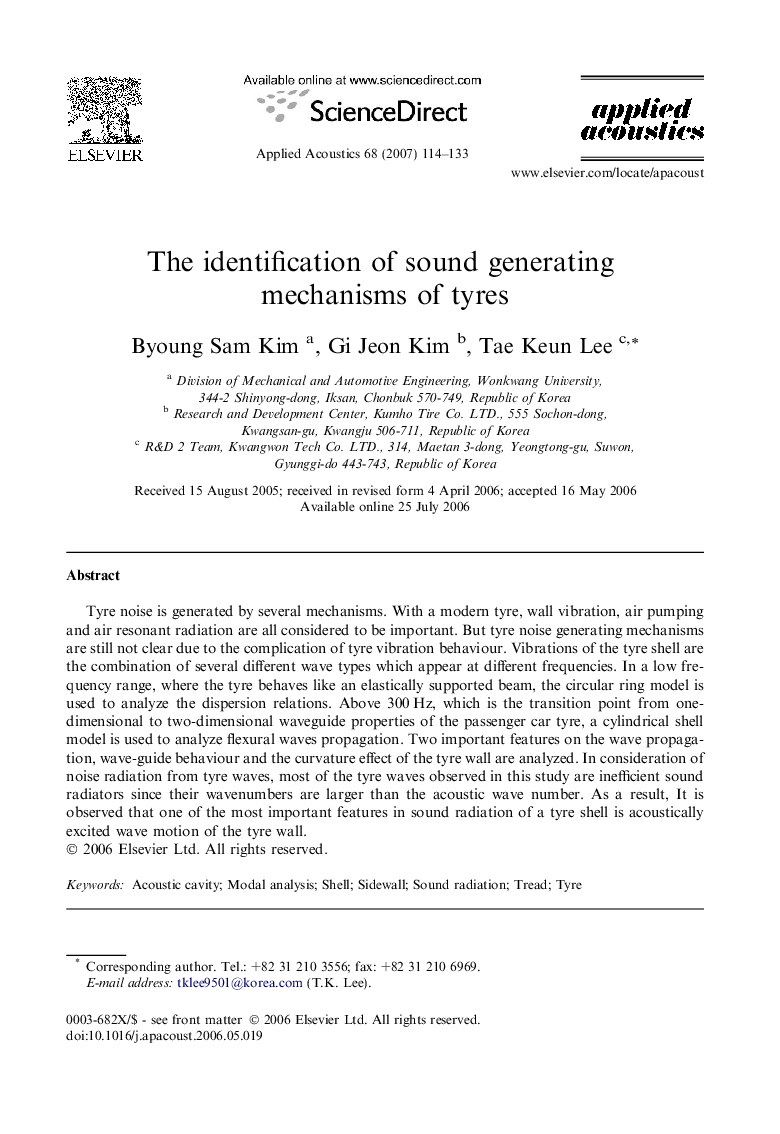| Article ID | Journal | Published Year | Pages | File Type |
|---|---|---|---|---|
| 755115 | Applied Acoustics | 2007 | 20 Pages |
Tyre noise is generated by several mechanisms. With a modern tyre, wall vibration, air pumping and air resonant radiation are all considered to be important. But tyre noise generating mechanisms are still not clear due to the complication of tyre vibration behaviour. Vibrations of the tyre shell are the combination of several different wave types which appear at different frequencies. In a low frequency range, where the tyre behaves like an elastically supported beam, the circular ring model is used to analyze the dispersion relations. Above 300 Hz, which is the transition point from one-dimensional to two-dimensional waveguide properties of the passenger car tyre, a cylindrical shell model is used to analyze flexural waves propagation. Two important features on the wave propagation, wave-guide behaviour and the curvature effect of the tyre wall are analyzed. In consideration of noise radiation from tyre waves, most of the tyre waves observed in this study are inefficient sound radiators since their wavenumbers are larger than the acoustic wave number. As a result, It is observed that one of the most important features in sound radiation of a tyre shell is acoustically excited wave motion of the tyre wall.
